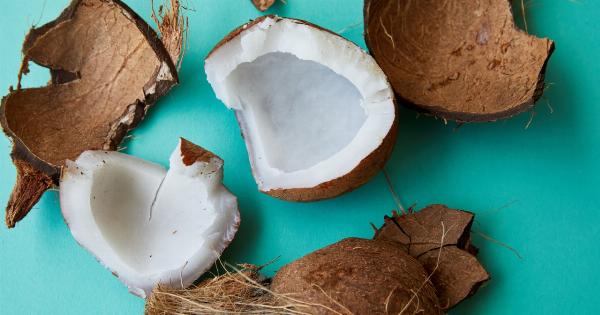Coconut bladder, also known as nutcracker syndrome, is a rare condition that affects the vascular system in the abdomen.
It occurs when the left renal vein, responsible for carrying blood from the left kidney to the vena cava, is compressed due to the abnormal anatomical position of the superior mesenteric artery. This compression can lead to a variety of symptoms, including:.
1. Hematuria
Hematuria, or blood in the urine, is a common symptom of coconut bladder. The compression of the left renal vein can cause blood to leak into the urine, resulting in red or pink discoloration.
2. Flank Pain
Many individuals with coconut bladder experience flank pain, which is a dull ache on one side of the abdomen or back. This pain may be intermittent or persistent and can worsen during physical activity or after standing for long periods.
3. Varicocele
A varicocele is an enlargement of the veins within the scrotum. In some cases of coconut bladder, the increased pressure in the left renal vein can lead to the development of a varicocele.
This can cause discomfort, swelling, and a lump-like sensation in the scrotum.
4. Left Flank Vein Engorgement
Coconut bladder can cause engorgement or enlargement of the veins on the left side of the abdomen, particularly in the flank area. This visible swelling may be indicative of the underlying compression of the left renal vein.
5. Pelvic Congestion Syndrome
Pelvic congestion syndrome is a condition that occurs when veins in the pelvic region become dilated and congested.
In some cases, coconut bladder can contribute to the development of pelvic congestion syndrome, leading to chronic pelvic pain, discomfort during intercourse, and pelvic heaviness.
Diagnosis of Coconut Bladder
Diagnosing coconut bladder typically involves a combination of medical history assessment, physical examination, and diagnostic tests. The following methods are commonly utilized for diagnosis:.
1. Ultrasound
Ultrasound imaging may be utilized to visualize the veins and assess blood flow. It can help identify any abnormalities or compression of the left renal vein associated with coconut bladder.
2. Doppler Ultrasonography
Doppler ultrasonography is a specialized type of ultrasound that examines blood flow through the vessels. It can provide detailed information about the velocity and direction of blood within the renal veins, aiding in the diagnosis of coconut bladder.
3. Computed Tomography (CT) Scan
A CT scan can provide cross-sectional images of the abdomen, allowing for a detailed assessment of the anatomical structures. It can help identify the compression of the left renal vein and rule out other potential causes of the symptoms.
4. Magnetic Resonance Imaging (MRI)
MRI utilizes magnetic fields and radio waves to generate detailed images of the body. It can provide valuable information about the veins, arteries, and surrounding structures, aiding in the diagnosis of coconut bladder.
5. Intravenous Pyelogram (IVP)
An IVP is a diagnostic test that involves injecting a contrast dye into a vein to visualize the urinary system structures. It can help determine the presence of any abnormalities in the renal veins and identify the underlying cause of symptoms.
Treatment of Coconut Bladder
The treatment for coconut bladder is determined based on the severity of symptoms and the individual’s overall health. Here are the commonly recommended treatment options:.
1. Conservative Management
In mild cases of coconut bladder, conservative management may be recommended. This approach focuses on symptom management through lifestyle modifications.
It may include avoiding physical activities that exacerbate symptoms, wearing compression garments, and taking pain medications as needed.
2. Medications
Medications, such as nonsteroidal anti-inflammatory drugs (NSAIDs), may be prescribed to manage pain and reduce inflammation associated with coconut bladder.
Anticoagulants may also be utilized to prevent the formation of blood clots within the affected veins.
3. Renal Vein Stenting
In more severe cases, where conservative measures fail to provide relief, renal vein stenting may be considered.
This procedure involves the insertion of a stent to widen the compressed area of the left renal vein, improving the blood flow and alleviating the symptoms associated with coconut bladder.
4. Surgical Intervention
In rare instances, surgical intervention may be necessary to treat coconut bladder. Surgical procedures, such as vein transposition or renal vein autotransplantation, aim to reconstruct or reroute the affected veins to relieve the compression.
Prevention and Outlook
As coconut bladder is a congenital condition, there are no specific preventive measures. However, early detection and timely intervention can help manage the symptoms effectively.
With appropriate treatment, individuals with coconut bladder can experience significant improvement in their quality of life.





























